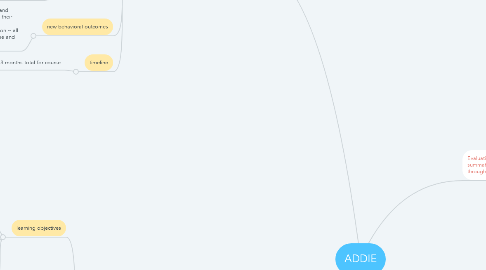
1. Design: strategize course format, delivery, and assessment
1.1. learning objectives
1.1.1. Give examples of motivating activities for struggling readers. Create a motivational atmosphere for reading in your home. Identify your child's specific reading difficulties. Describe the reading goals you have for your child.
1.1.2. Explain and reproduce two strategies for improving vocabulary acquisition.
1.1.3. Identify decoding errors. Explain why decoding errors happen at various ages. Understand and practice strategies for helping readers decode well.
1.2. content: exercises, lessons, media
1.2.1. Each in-person lesson will address an objective, include hands-on practice, have an activity to try at home.
1.2.2. Following each lesson, content (articles, videos that demonstrate strategies, relevant research publications, etc.) will be given on the LMS.
1.3. mode of delivery
1.3.1. in person short 10-15 minute lectures interspersed with activities and discussion
1.4. duration & pace
1.4.1. meet in person every other week for 3 months; weekly online discussions and Q&A on the LMS; continuous support for questions via the LMS
1.5. learner activities & participation
1.5.1. designed according to objectives; generally linked to specific, usable strategies for improving reading
1.6. formative assessments
1.6.1. this will happen during the large group, in person meetings as learners try out the strategies; additionally they will be given activities to try out at home (and report back on)
1.7. summative assessments
1.7.1. Parents will formally assess their child's reading level at the beginning and end of the course. They will report back to the instructor about their analysis of why their child did/did not make reading gains.
1.8. follow up activities
1.8.1. Check in with parents at 6 mo and 1 year to see if course material helped them meet their reading goals with their child.
2. Development: assemble & create the planned content while implementing any feedback
2.1. create a sample of instruction
2.1.1. do this for objectives that address motivation and vocabulary acquisition
2.2. develop materials
2.2.1. do this for resources, research, videos, discussions, and activities on the LMS (for one week)
2.3. hold a "dry run"
2.3.1. ask 1-2 parents who I have worked with previously and 1-2 new parents
2.3.2. get feedback related to overall course objectives, usability, relatability, ease and fun
3. Analysis: carefully consider instructional variables
3.1. learning environment
3.1.1. public meeting space for large group meetings; online LMS for sharing of resources, check-ins, activities and summative assessments
3.2. learner's prior knowledge
3.2.1. little, if any, about the subject matter
3.2.2. may have much PK about their child's reading abilities and growth curve, as well as child's interests and schedule
3.3. establish goals
3.3.1. help parents identify their child's reading level; give parents tools for 1) correcting vocabulary deficiencies, 2) decoding problems, and 3) motivational issues
3.3.2. Note: because this is geared toward parents, it is not a comprehensive reading correction course.
3.4. delivery options
3.4.1. in person group settings; online for additional resources and communication; one-on-one if the need arises
3.5. new behavioral outcomes
3.5.1. With a reasonable amount of time and energy, parents will be able to help their struggling reader to make gains in decoding, vocabulary, and motivation -- all within the comfort of their own home and schedule.
3.6. timeline
3.6.1. 3 months total for course
4. Implementation: delivery of the course
4.1. train facilitator (if necessary)
4.1.1. N/A
4.2. brief learners in technology that will be used
4.2.1. explain LMS, including how to access and download material, and how to actively participate
4.3. consider flow: learner motivation, lesson introduction & review, time management, etc.
4.3.1. bring every session around to feasibility, strengthening family dynamics, and meeting the needs of young readers now so that they can make future academic gains in all areas
5. Evaluation: use formative & summative assessment throughout ADDIE process
5.1. collect feedback & data
5.1.1. about objectives for parents (the learners)
5.1.2. about the progress parents' children are making in reading
5.1.3. ask some parents if they would be willing to be videoed using the strategies they learned (for use in upcoming courses)
5.2. use all feedback & data to refine upcoming courses
5.3. let learners evaluate course
5.3.1. utilize google forms or survey monkey, etc.
5.4. Ask: are learners applying their new understanding?
5.4.1. Parents should test their child before and after they have learned and used course material.
5.4.2. Maintain contact with parents so that they can report progress, challenges, and ask for help.

